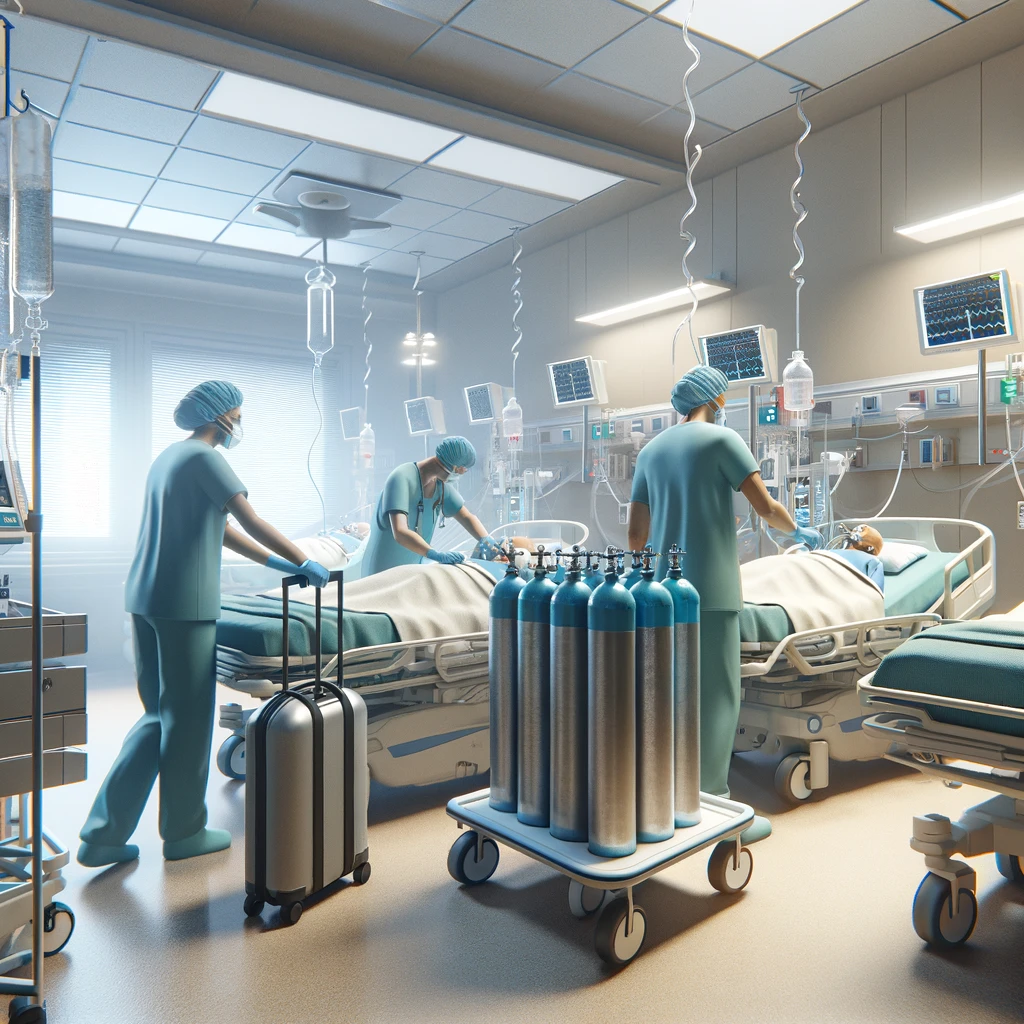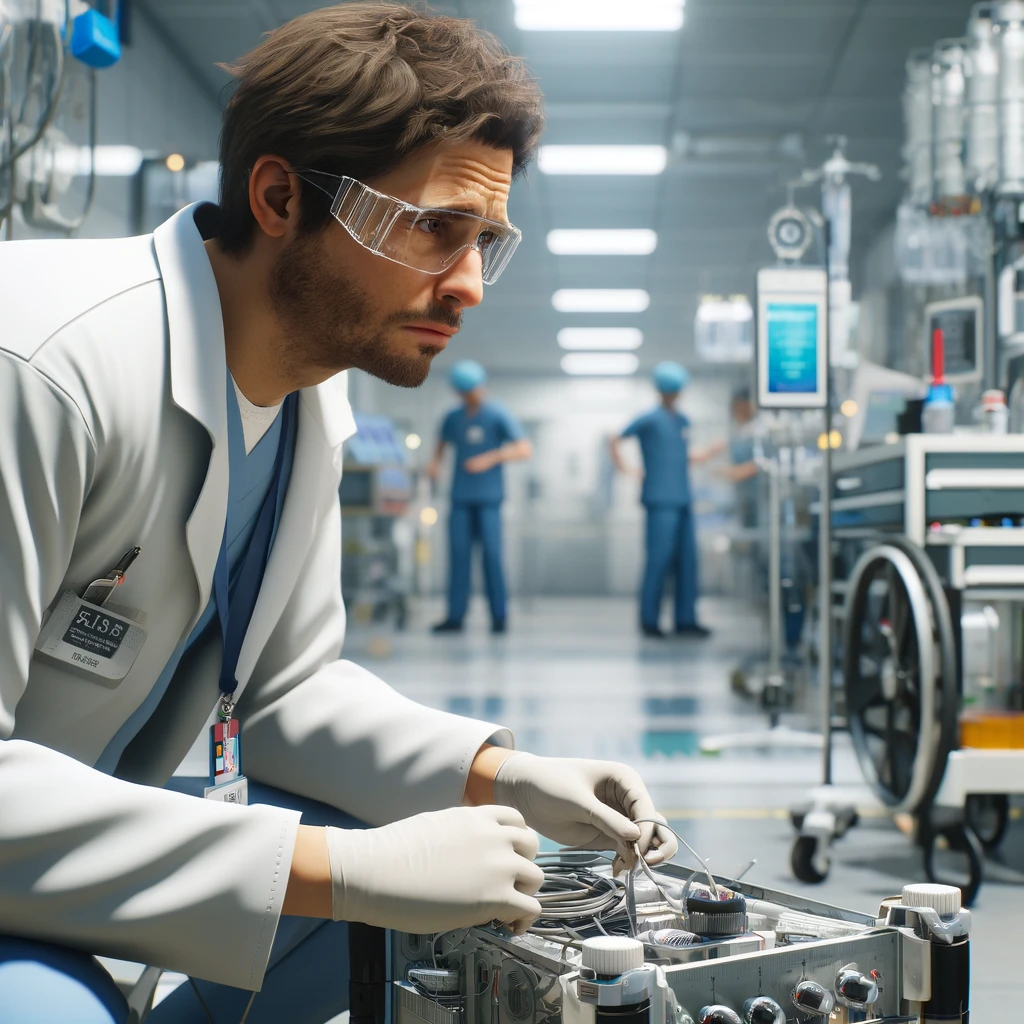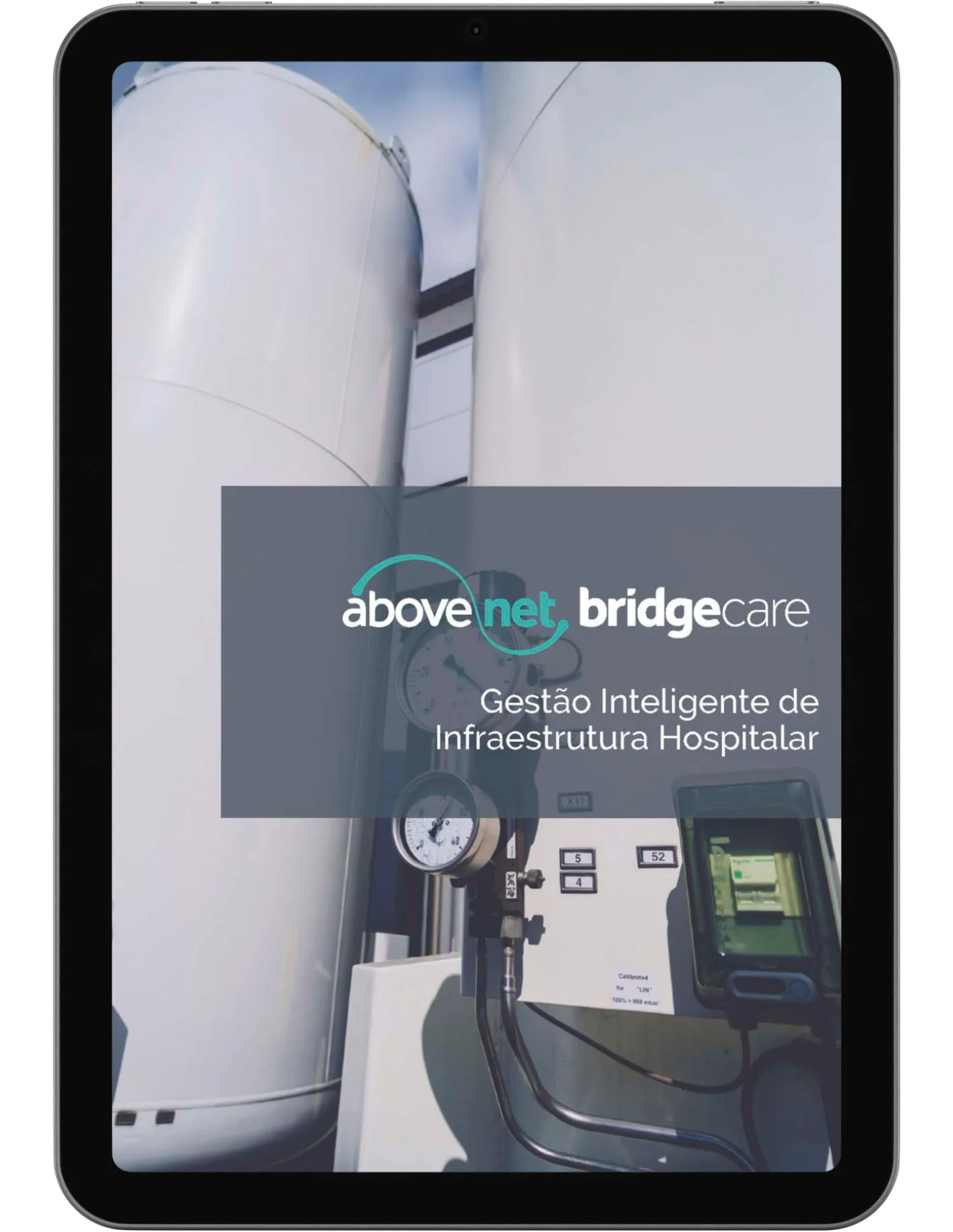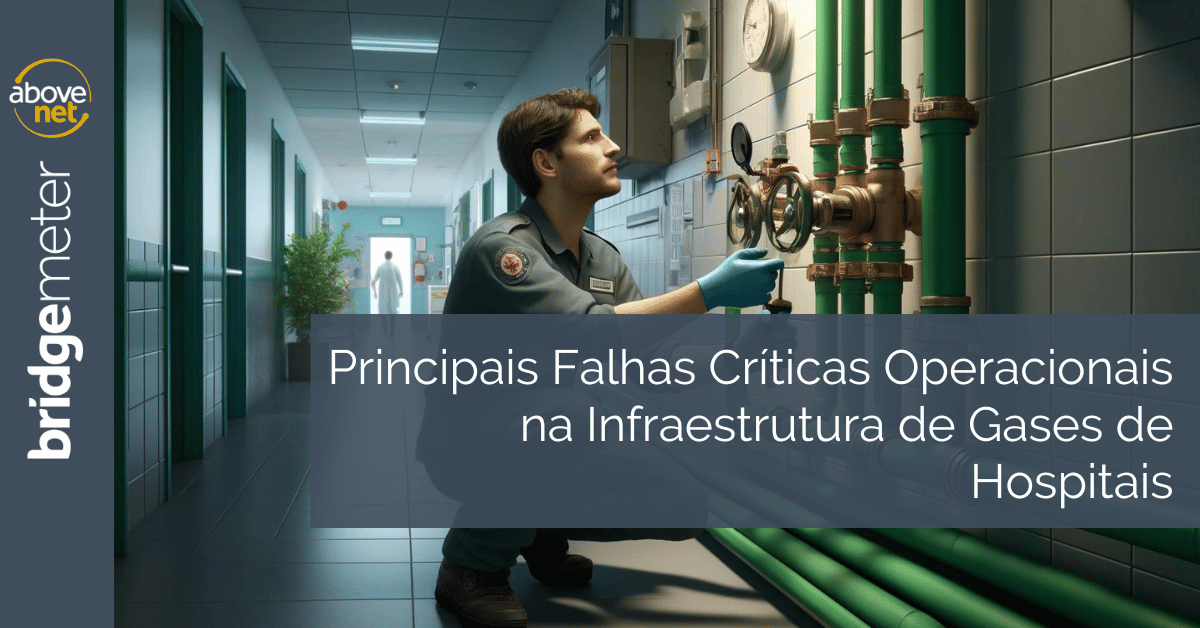Efficiency and safety are essential pillars in hospital operation, where any failure can have serious consequences for patients' lives. The complexity of hospital systems, especially those related to the supply of medicinal gases, can lead to catastrophic failures if neglected.
The sudden increase in medicinal gases consumption, breaking equipment by operation outside the manufacturer's recommendations, dynamic resizing of unnecessary or emergency supply systems are just some examples of situations that can generate risks such as:
- Risk to patients' lives;
- Inefficiency and unnecessary expenses;
- Legal processes due to lack of inputs or interrupted procedures;
- Lack of operation documentation for inspections, audits and legal defenses;
- Difficulty in decision making for the absence of historical data.
The purpose of this article is to warn of the main operational critical failures in hospitals infrastructure, highlighting the most common problems and their possible consequences. Understanding these challenges, health professionals and hospital managers can take proactive measures to minimize risks and ensure the safety and efficiency of hospital operations.
Case of study: incident in a hospital in São Paulo
In the heart of Sao Paulo, a serious incident in a hospital highlighted as a need for relatively simple maintenance can lead to a sequence of major and critical problems. A maintenance technician was called to perform an operation on the hospital's vapor piping network. Due to the complexity and lack of standardization of antique infrastructures, both vapor pipe and medicinal oxygen were painted the same color, green. Convinced that he was operating in the correct pipe, the technician closed a valve, without realizing that he was actually interrupting the supply of vital medicinal oxygen to the Intensive Care Unit (ICU).
The problems identified during this incident were numerous and alarming. First, the lack of clear distinction between the vapor and oxygen pipes led to the initial human error. Secondly, the absence of a monitoring system that could quickly identify the failure and alert those responsible aggravated the situation. When the alarms began to sound due to lack of oxygen, the clinical engineering team faced difficulties in identifying the origin of the problem, as the main tanks and reserves were seemingly normal. The complexity of hospital infrastructure, with pipes that stretched through vast and remote areas, made the location of the failure point even more challenging.

The consequences of this incident were tragic. The interruption of oxygen supply resulted in the stop of the ICU pulmonary fans, putting the life of patients at immediate life. The medical team had to resort to portable oxygen cylinders, transporting them manually to patients, which took several hours and required significant physical and logistics effort. Unfortunately, this delay resulted in the death of a patient and injuries to others who did not receive oxygen on time. In addition to human losses, the hospital faced an operational and reputation crisis.
Common operational problems in hospital infrastructure management
Hospitals face a number of operational challenges that can compromise the efficiency of patients and patient safety. Among the most frequent problems are compressor overdiving, electrical flaws in gas mixers, and challenges in clinical vacuum management, as well as oxygen demand variations. Each of these problems can lead to significant interruptions in hospital operations, causing delays in treatments and endangering patients' lives. Understanding and mitigating these problems is essential to maintaining a safe and efficient hospital environment. Let's quickly analyze each of these problems.
Superdimensions of compressors
A common operating problem in hospitals is the superdimensioning of medicinal gases. When a compressor is sized to a greater capacity than necessary for the current demand of the hospital, it tends to operate in long periods and load mode for short periods. This inadequate operating cycle can cause premature wear of the compressor components, leading to frequent failures and reducing equipment life. In addition, running in relief may result in waste of energy, increasing the hospital's operating costs. Thus, it is crucial to scale compressors properly for the current and future demand of the hospital, ensuring an efficient and sustainable operation.
Electrical failures in gas mixers
Gas mixers are essential for providing a precise mixture of oxygen and nitrogen, creating synthetic air needed for various medical applications. However, these devices are vulnerable to electrical failures such as voltage peaks or power outages. An electrical failure may disable the mixer by interrupting synthetic air supply and forcing the hospital to reserve cylinders, which may not be sufficient in high demand. Recovery of these failures usually requires the manual intervention of technicians, which may take time to arrive, especially if the hospital is located in a remote area.
Problems in Clinical Vacuum Management
The clinical vacuum system is vital to various hospital operations, including the removal of patient secretions and the performance of surgical procedures. Any failure in this system can paralyze these operations, resulting in delays in treatments and increasing the risk of complications for patients. One of the most common challenges in clinical vacuum management is filter obstruction, which occurs due to particle and liquid accumulation during operations. If they are not monitored and kept properly, these filters can saturate and obstruct, reducing system efficiency and may cause complete failures. In addition, vacuum compressor failures, which are responsible for maintaining the negative pressure required, may occur due to mechanical or electrical problems.
Increased demand for oxygen and logistics challenges
In a hospital environment, the demand for oxygen can suddenly and unexpectedly increase due to events such as medical emergencies, breathing disease outbreaks or accidents that result in a large number of patients requiring ventilatory support. These sudden increases in oxygen demand challenge the capacity of hospital supply systems, which may not be prepared to deal with such consumer peaks. When demand exceeds the supply capacity, there may be a significant drop in pressure from oxygen distribution systems, compromising patient care and endangered lives.
In addition to technical challenges, oxygen supply logistics becomes critical in high demand situations. In remote regions or during extreme weather events such as floods, the replenishment of oxygen tanks can be severely difficult. Failure to ensure timely replenishment can lead to critical situations, where the autonomy of oxygen reserves is reduced to dangerously low levels.
Humidity and maintenance problems of gas filters
The presence of humidity in the hospital gases network is mainly caused by water vapor condensation due to temperature variations within the pipes, water infiltration through inadequate seals and connections, and the saturation of moisture filters that are not maintained or regularly replaced. In addition, failures in air dryers, which are essential for removing compressed air moisture, may allow moisture to remain in the system, compromising the quality of the supplied air.
Another critical factor is the air quality input in the compression system. If the input air is very damp, it can overload the drying and filtration systems, allowing the humidity to enter the distribution network. Extreme environmental conditions, such as high relative humidity in tropical regions or during damp climate periods, can also increase the moisture load in the system.
Impact of stress on decision making
Stress has a significant impact on discernment and decision making, especially in high pressure environments such as hospitals. Studies show that in extreme stress situations such as medical emergencies, people's cognitive capacity can be reduced by up to 50%. This is because intense stress triggers a response from “struggle or escape” in the body, prioritizing instinctive actions on logical and critical thinking. In a hospital, this can result in hasty or incorrect decisions, delays in crisis response and, in severe cases, put patients' lives at risk.

Conclusion
In this article, we explore the critical operational challenges faced by hospitals, especially related to the management of medicinal gas systems. Through the study of a serious incident in a hospital in São Paulo, we highlight as a human failure and the absence of an adequate means of deviation from the operation can lead to catastrophic consequences.
Problems such as compressor oversizing, electrical flaws in gas mixers and difficulties in clinical vacuum management have been addressed, showing the need for constant attention to mitigate these risks. Moisture in the gas network, with its potential to damage equipment and causing microbiological contamination, is also a significant challenge. We address the main causes of this humidity, including vapor condensation, infiltrations and failures in drying and filtration systems. In addition, we highlight how stress negatively impacts the decision capacity of health professionals.
With so many risks, how can we avoid these events?
To learn more about how to face these challenges and ensure the safety and efficiency of hospital operations, download our “Intelligent Hospital Infrastructure Management” catalog.
This comprehensive feature offers practical insights and strategies to help maintain a safe and efficient hospital environment. Do not miss the opportunity to transform the infrastructure management of your hospital.

Catalog
Want to know more about how to conduct intelligent management of hospital infrastructure?
Then download our catalog to explore how IoT monitoring of the hospital infrastructure improves patient care. Find out smart preventive monitoring solutions with Bridgemeter.


